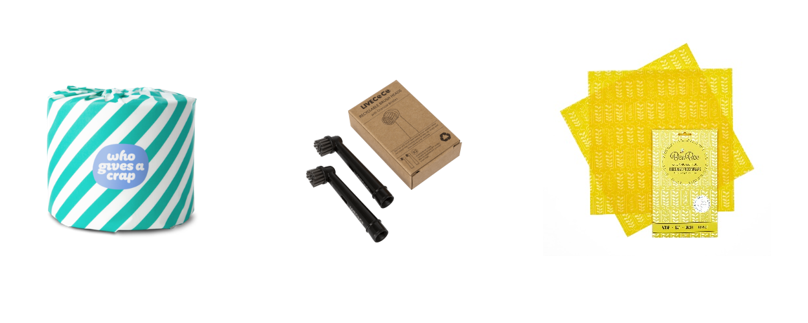
COVID-19 and the rise of Click & Collect
I didn’t order anything in the first 10 weeks of lockdown, conscious that I didn’t want to pull a delivery worker out if it wasn’t an essential visit.
19th June 2020 • Team Thoughts

Last week I decided that the statistics were improving and the economy needed a boost so I’ve joined the millions turning to the internet to support their shopping while they Stay Home.
So today, a piano music book, a pair of shorts, a water toy and a pair of trainers have all arrived separately at my door.
I’ve written before about how I’ve become much more environmentally aware in the last year or so. The use of plastic has not been on my mind as much during the pandemic, and I’ve tended to pick up the plastic container of mushrooms, rather than fill a paper bag at the supermarket. I am still clicking on links on my Facebook feed from companies selling products to help the environmental crisis we face:

All the 3 products above; loo roll, toothbrushes and ‘cling film’ I buy at a supermarket – either in my weekly shop, which includes one short car journey, or in my online shop which includes the same short journey by a van.
If I bought these 3 products outside my weekly shop, it would result in an additional 3 trips, but each product in itself helps the environment compared to its alternative. There is no clear winner when it comes to the environmental cost of online vs in-store.
Online shopping is going to continue to rise. Time will tell whether the current rise in localism during the COVID-19 pandemic will be sustained. Environmental packaging, electric vehicles (or better still cycles) for the last mile and making people aware of planning ahead and not relying on same/next day delivery to avoid empty vans, are all ways which can support the rising environmental cost of online in the future.
A significant win would be the rise of click & collect
UK Grocery C&C accounts for a small percentage of transactions, in comparison to our French counterparts, who love ‘Click & Drive’ shown by half the sales of E. Leclerc being C&C back in 2018 (source: Nielsen and FEVAD)
However, many UK households have turned to grocery click and collect during the COVID-19 pandemic, as supermarkets prioritised the elderly and vulnerable for online delivery. A proportion of these C&C customers will realise the benefits and continue with C&C post lockdown lifting.
Other retailers, for example Dunelm Mill, have started to offer click and collect for the first time in the attempt to not lose customers who now don’t want to enter a store.
A survey last month of 2,004 consumers by Qudini shows that 42% are now more likely to use click and collect services. Qudini help retailers improve the C&C experience by using software to enable customers to book slots and digitally announce when they have arrived at store, something that will become ‘the norm’ in the future.
As the world start to leave their homes again (when it is safe to do so), and they can’t guarantee they will be in for deliveries, they may be now be more willing to click and collect than they were previously.
Picking up from a C&C location ensures couriers can make less trips with full vans and can reduce the environmental impact of the last mile significantly. Retailers can offer C&C as a free service to the customer, in order to manage ‘last mile’ costs.
Click and Collect can be a triple winner - helping the retailer, customer and the environment.
Title Image: Photo by Henrik Dønnestad on Unsplash

Related Posts
-

Leeds and the 15-Minute City: A Retail Perspective
Leeds, the biggest city in Europe without a mass transit system. That is set to change. Freddie Wallace explores the benefits and challenges while evaluating the idea of a 15-minute city.
Published 10th March 2025 • Tags team-thoughts
-

The Importance of Site Visits for Location Planners
While data driven insights are essential, site visits are indispensable for Location Planning. Alison interviewed our Location Planners to find out why we do them and 10 top tips that might help you next time.
Published 1st June 2023 • Tags market-visits, team-thoughts
-

Inside the Corner Store - ALDI Melbourne
While Rachel was in Australia working on a client project she took time out to explore Melbourne CBD and visited the new ALDI format Corner Store.
Published 24th October 2022 • Tags market-visits, team-thoughts